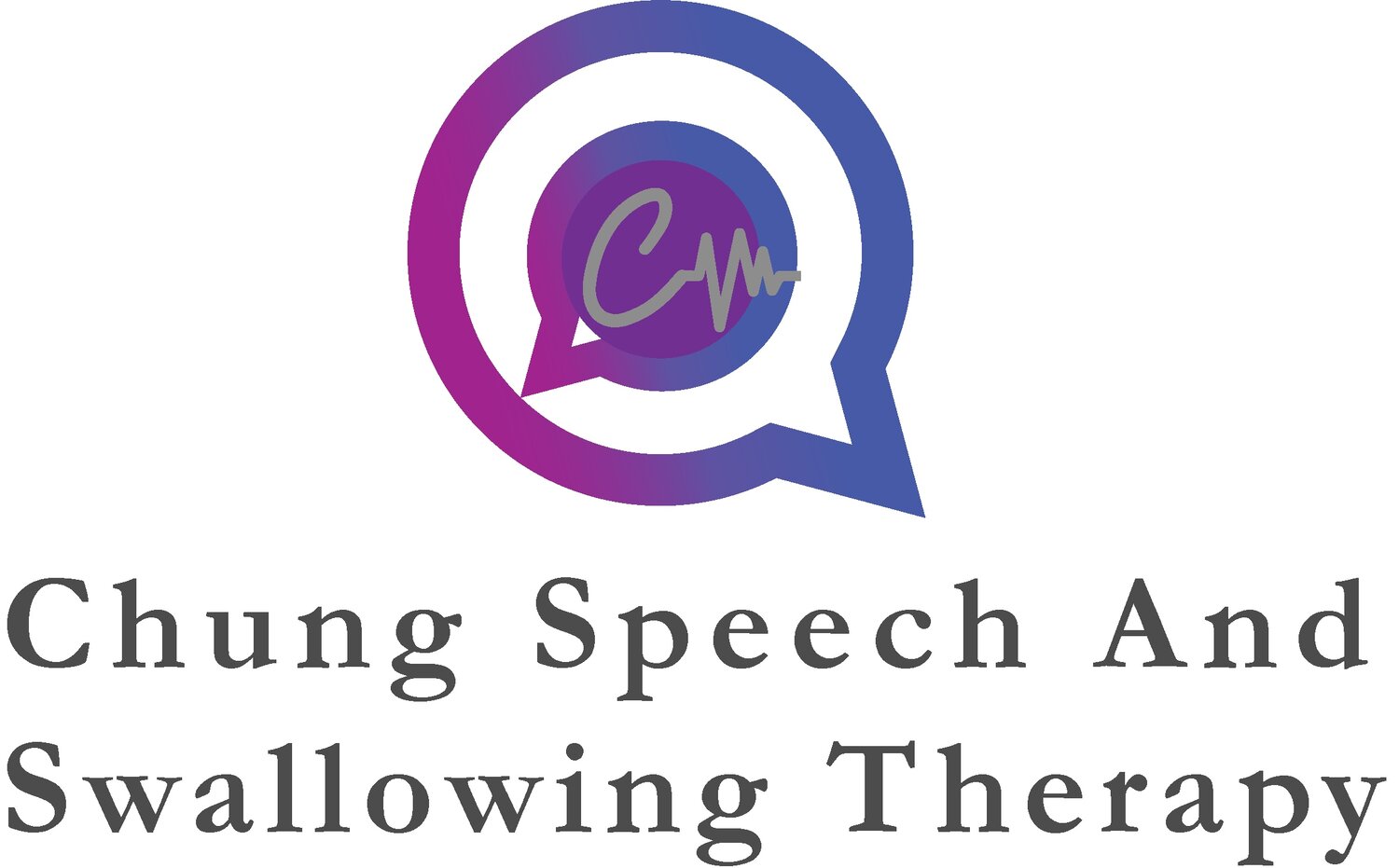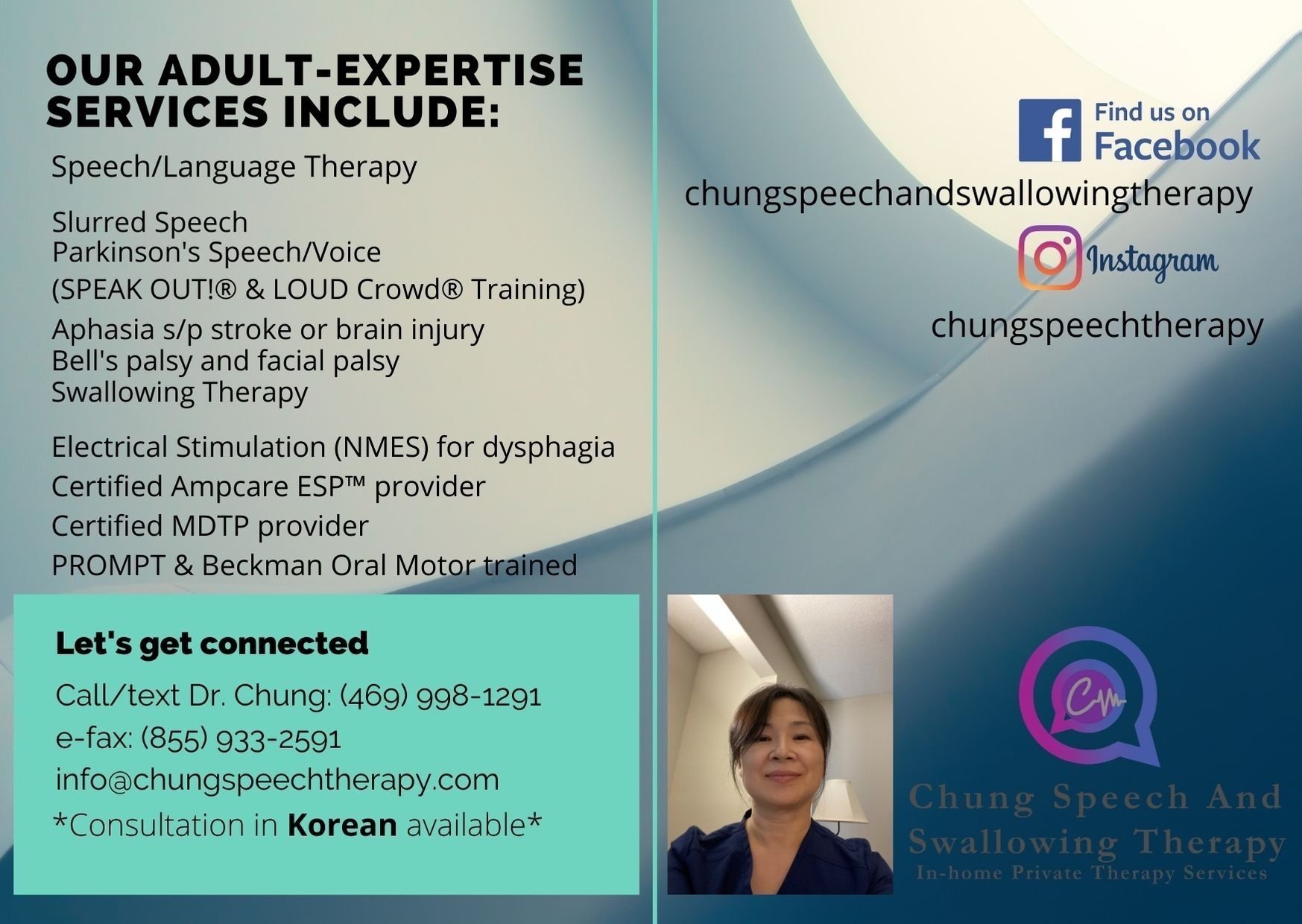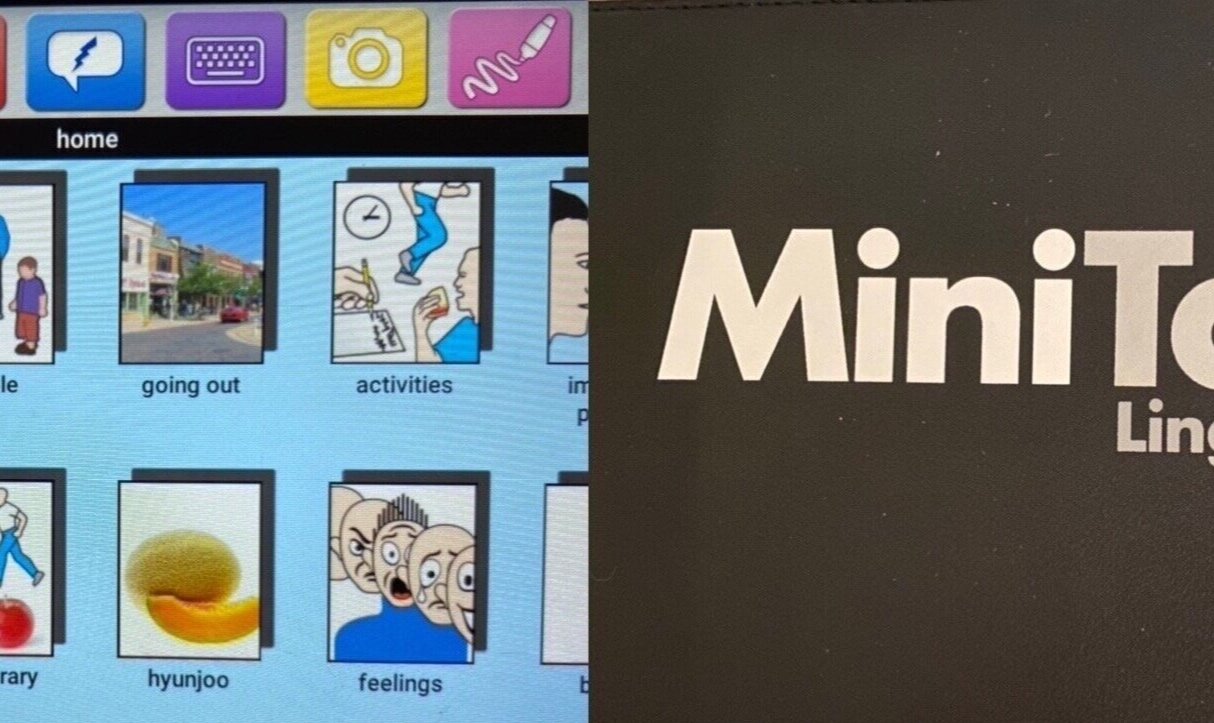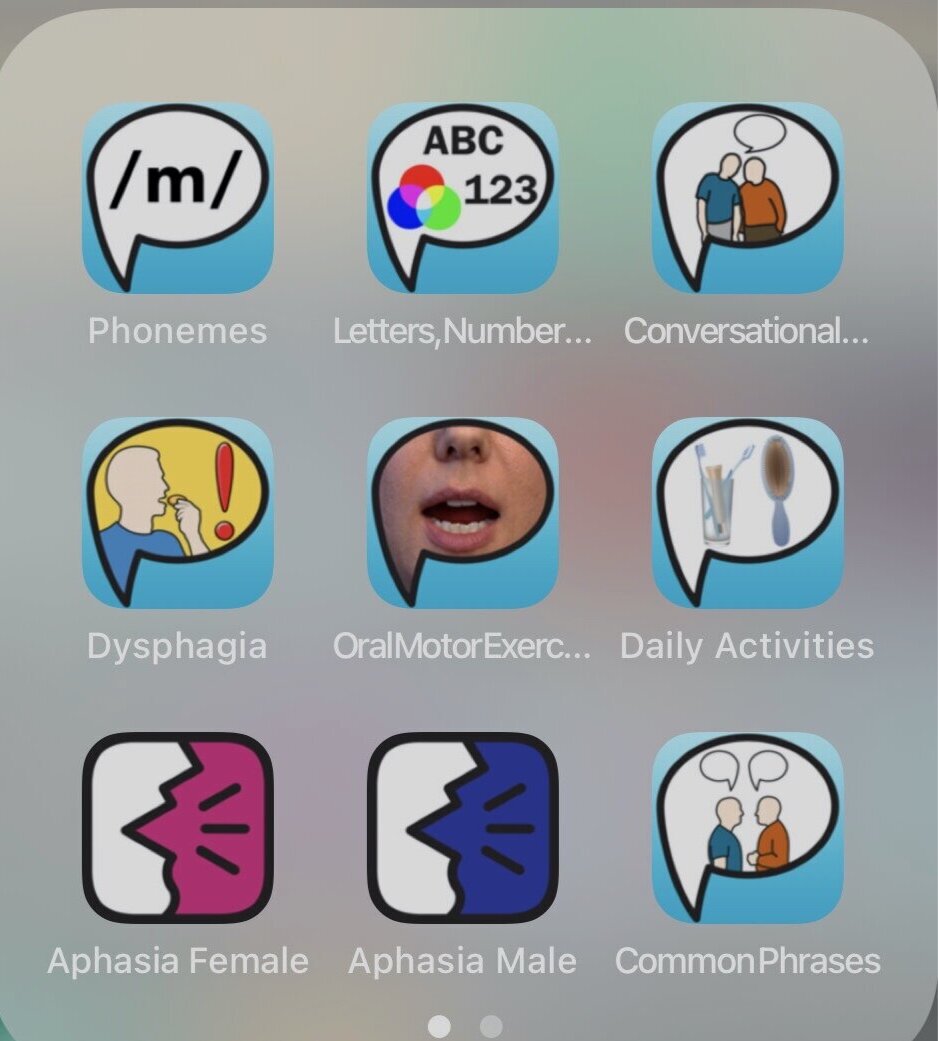Our Practice

Chung Speech And Swallowing Therapy
정 언어.삼킴치료 클리닉

What Is Our Mission?
Chung Speech And Swallowing Therapy (CSST) aims to provide speech language pathology services to adult clients in our locality in most flexible and effective ways. We are aware that many knowledgeable, skilled, and dedicated providers are around us, which is a great thing. When our clients want to receive services from us, we would like to offer the best we can offer with respect to both therapeutic approaches and flexible environments. We believe in thriving together with clients that we help to attain their desired goals. Some may need more involvement in their natural environment and others more structured and frequent visits. Our person-centered and interactively maneuvered therapy approach will create opportunities for clients to be successful regardless of locations as far as newly learned skills or strategies are successfully carried over into their life.
We will continue to learn about evidence-based therapy tools and new effective methods to help our clients. CSST as a private practice speech therapy clinic purposes to serve clients in our community who are motivated to work hard to reach their highest potential in rehabilitation of speech, language, communication, voice, and swallowing. We also recommend that clients try to find a clinician in the most appropriate environment where their needs can be best addressed. You can research providers and therapy approaches that are available in your area and consult your medical team and clinicians in other disciplines (i.e., physical therapists, occupational therapists, and dietitians) in order to make a decision about whom and where you would go to for your rehabilitation. Feedback for our services from former and current clients who had similar needs and interests are available at my google business page.

Who Would Benefit From Our Services
APHASIA
Clients s/p stroke or brain injury may exhibit receptive and expressive aphasia. We breakdown their speech and language profiles to help them put them together in order to functionally communicate. Augmentative Alternative Communication device trials (i.e., Lingraphica Communication devices) and consultation may be recommended depending on the severity of expressive aphasia. You can find a Certified Lingraphica Technology Specialist in your locality. I am a certified specialist in the area of Carrollton, Texas.
DYSPHAGIA
Swallowing is controlled by the neural network. Symptoms of swallowing difficulties vary depending on the altered neural control and associated anatomical and physiological changes. The muscles and cranial nerves involved with swallowing impairments are to be addressed to rehabilitate swallowing function. The etiology, resulting fictional deficits, and associated factors are essential to attain best clinical outcome in dysphagia treatment.
Adult & Pediatric Hypophonia |Dysarthria
PARKINSON’S SPEECH & VOICE
Voice therapy can be provided to improve vocal quality by modifying vocal behaviors resulting in the voice change with adult and pediatric clients. We offer LSVT LOUD® Pediatric for pediatric clients. We also offer intensive speech/voice therapy for Parkinson’s clients via SPEAK OUT!® and LSVT LOUD® & eLOUD®. Both programs are well researched and successfully address challenged automatic motor speech control due to Parkinson’s and other neurological conditions.

VOICE | BREATHING | COUGH
Voice therapy involves a variety of tasks or exercises to target optimal vocal behaviors for the patients who have either hyperfunctional or hypofunctional voice disorders. Hyperfunctional voice disorder results from overuse of the laryngeal muscles such as vocal cord nodules. Hypofunctional voice disorder can occur from a stroke or peripheral damage. Before seeing a speech pathologist, you may have a diagnosis from your laryngologist (e.g., Laryngitis, vocal cord nodule, vocal cord paralysis, muscle tension dysphonia, etc.). Also, paradoxical vocal fold motion disorder (PVFMD) and chronic cough can be addressed in voice therapy as they are closely associated with breathing and laryngeal health.
Voice therapy for voice and laryngeal disorders
PhoRTE VOICE THERAPY
Phonation Resistance Training Exercises (PhoRTE®) is voice therapy that incorporates a number of voice therapy tools to address age-related voice changes. The PhoRTE voice exercises intensively engage both the respiratory and phonatory systems of voice production to address presbyphonia. Presbyphonia as a diagnosis of exclusion is to be obtained from an otolaryngologist and videolaryngostroboscopy is required before being determined whether a patient is a good candidate for PhoRTE Voice Therapy. Physiologic strategies targeted in PhoRTE are High Expiratory Pressures, Tight Phonatory Adduction, and Megaphone Oral Resonance. Treatment schedule is one evaluation and 5 treatment sessions with a speech pathologist. Home exercises are completed once daily.
COGNITIVE TRAINING
A cognitive evaluation is administered to assess a patient’s cognitive skills in a variety of areas. Dr. Chung is trained and certified to administer and score Montreal Cognitive Assessment (MoCA). This test can be used as part of a cognitive evaluation to detect cognitive impairment related to various neurological diseases or conditions. Some patients may be referred to a primary care physician or neuropsychologist for further workup. Multiple APPs such as TalkPath Therapy (cognition and language sections), Memory Games, and Reasoning Games can be implemented in therapy or recommended for home exercises. TalkPath Therapy is an APP available at Lingraphica site (https://therapy.aphasia.com).

APRAXIA
Many clients with expressive aphasia s/p stroke may experience prolonged impairments in coordinating speech structures to form phonetic gestures. The profiles of both aphasia and apraxia should be tactfully addressed for such clients. A PROMPT-trained clinician (Prompts for Restructuring Oral Muscular Phonetic Targets) is available to implement a tactile-kinesthetic approach to help such clients restructure target phonetic gestures. Depending on the severity of their apraxia, Augmentative Alternative Communication device trials (i.e., Lingraphica Communication devices) and consultation may be recommended.
AAC device trials
NEUROMUSCULAR ELECTRICAL STIMULATION (NMES) for DYSPHAGIA
Ampcare Effective Swallowing Protocol (ESP™) Therapy System is FDA cleared for muscle re-education through application of external electrical stimulation to the muscles essential for pharyngeal contraction. We provide NMES for dysphagia via Ampcare hand-held 2-channel electrical stimulation unit with adjustable parameters cleared by the FDA for the treatment of dysphagia. A physician order for NMES for dysphagia is required along with precautions. NMES is contraindicated for clients with any implanted electronic device such as cardiac pacemakers.
Ampcare ES
BELL’S & FACIAL PALSY
There are various etiologies of facial weakness involving the Facial Nerve, Cranial Nerve VII, which could be central or peripheral. Bell’s and other facial palsy are peripheral. Peripheral facial nerve palsy causes ipsilateral upper and lower facial weakness whereas TIA or cortical stroke (i.e., central) may cause a contralateral lower facial weakness. Symptoms of Bell’s palsy usually start to recover in a few weeks. If you are concerned about limited recovery of facial weakness within 3-5 months since the onset, you can consult your physician for a speech therapy evaluation. Kinesiology taping may be utilized.
















